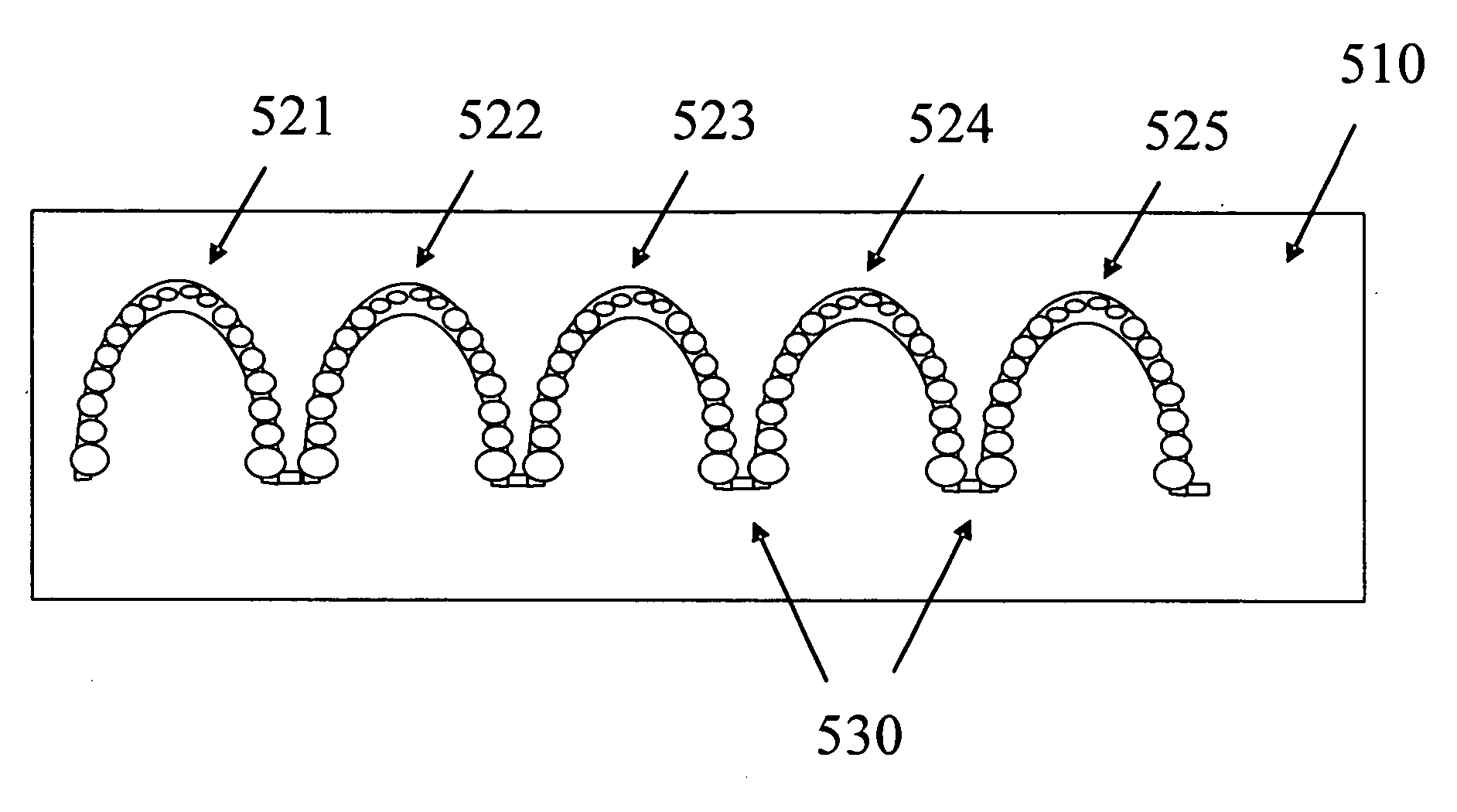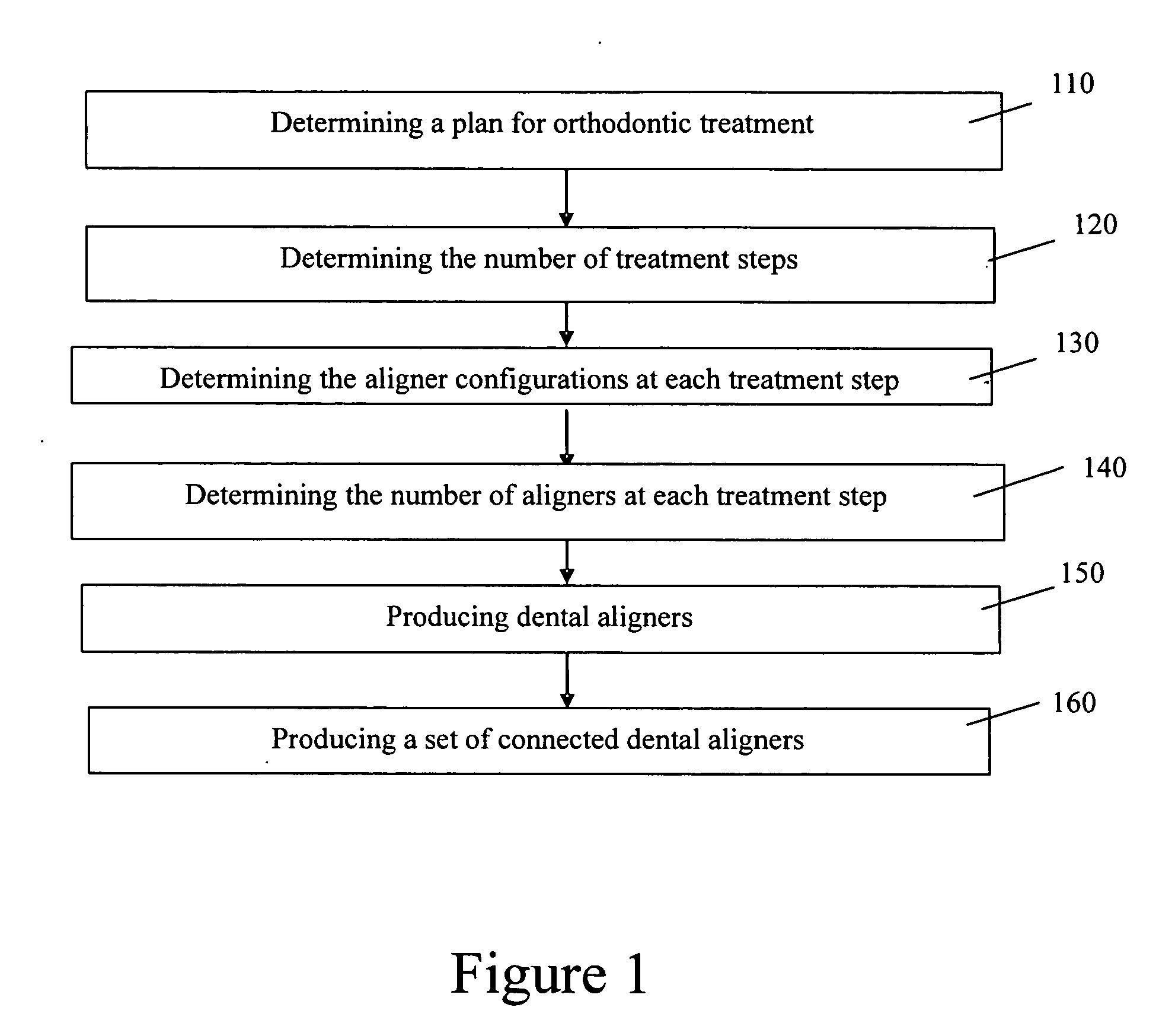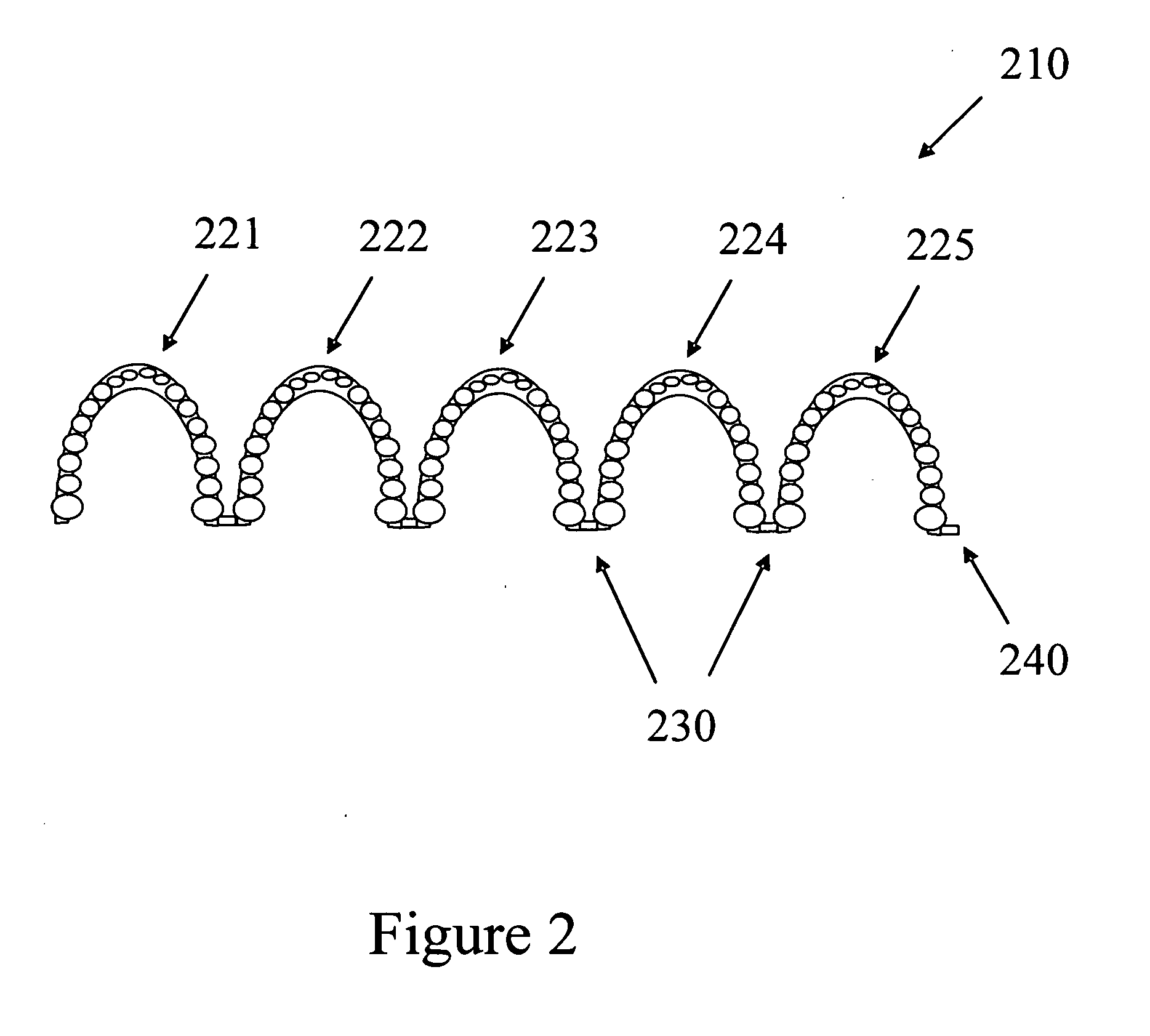System for organizing dental aligners
a technology for aligners and brackets, applied in the field of orthodontics, can solve the problems of difficult (if not impossible) to accurately develop a visual difficult (or impossible) to determine the ideal bracket location, and difficult for a human being to accurately develop a three-dimensional image of an orthodontic structure. , to achieve the effect of facilitating disconnection, and reducing the chance of errors
- Summary
- Abstract
- Description
- Claims
- Application Information
AI Technical Summary
Benefits of technology
Problems solved by technology
Method used
Image
Examples
examples
[0056]FIG. 2 shows one variation of an array of dental aligners. A linear array of adjacently connected dental aligners 210 includes a plurality of dental aligners 221-225 that are connected by a plurality of connectors 230. The aligners 221-225 are arranged in the same order as the treatment sequence to be used by the subject. For example, the first dental aligner in the linear series 221 is for the first treatment step; the second dental aligner 222 is intended for the second treatment step, and so on. The subject can break off each of the aligners 221-225 one at a time during the treatment. Thus, the aligners are arranged in the same order as the intended usage, which prevents the dental aligners 221-225 from being used out of the treatment sequence. The array of connected dental aligners may be easy to carry and store. This may also eliminate the need for a dedicated storage system for the dental aligners. Labeling the aligners can also be simplified or eliminated. For example, ...
PUM
 Login to View More
Login to View More Abstract
Description
Claims
Application Information
 Login to View More
Login to View More - R&D
- Intellectual Property
- Life Sciences
- Materials
- Tech Scout
- Unparalleled Data Quality
- Higher Quality Content
- 60% Fewer Hallucinations
Browse by: Latest US Patents, China's latest patents, Technical Efficacy Thesaurus, Application Domain, Technology Topic, Popular Technical Reports.
© 2025 PatSnap. All rights reserved.Legal|Privacy policy|Modern Slavery Act Transparency Statement|Sitemap|About US| Contact US: help@patsnap.com



